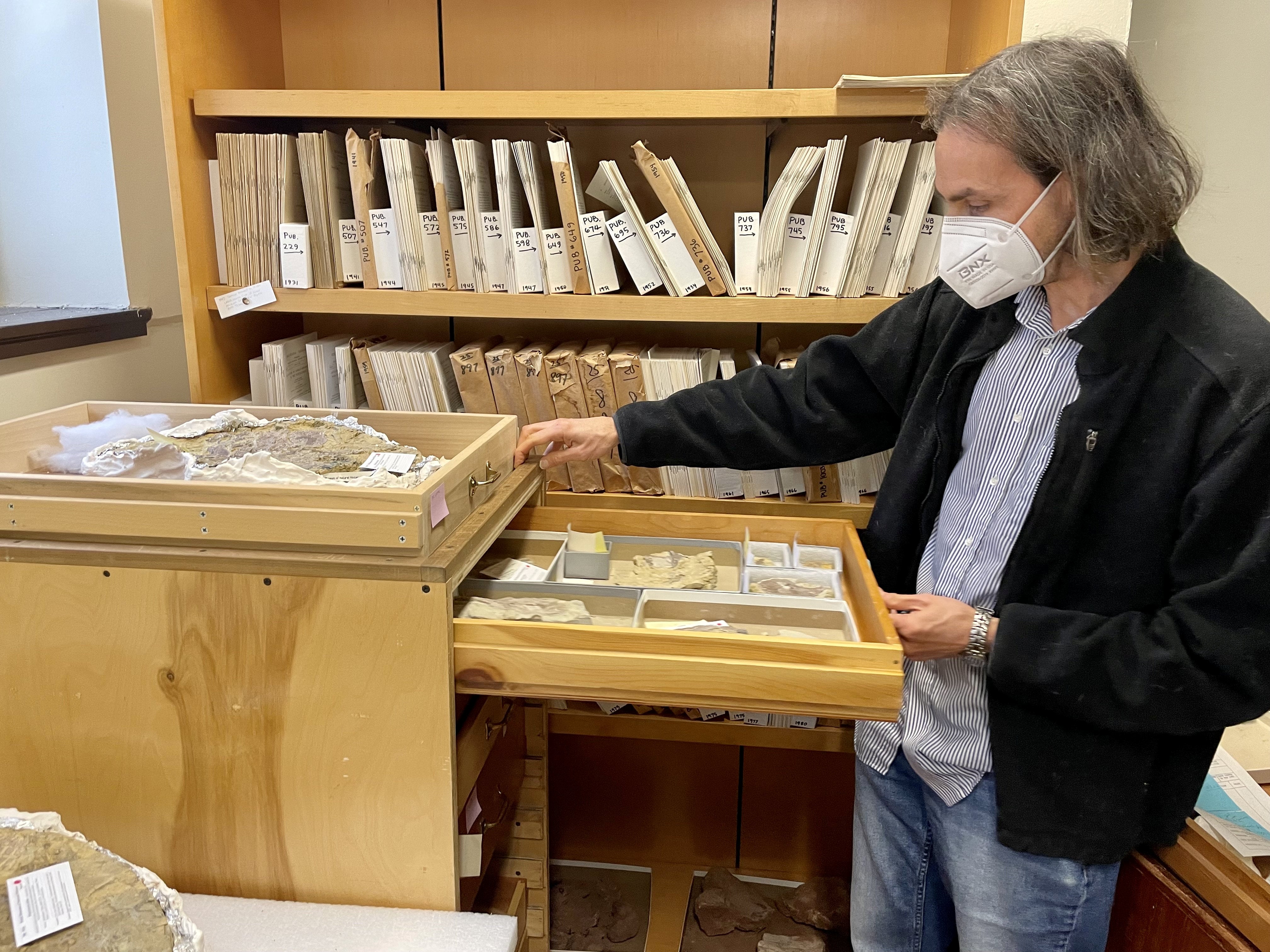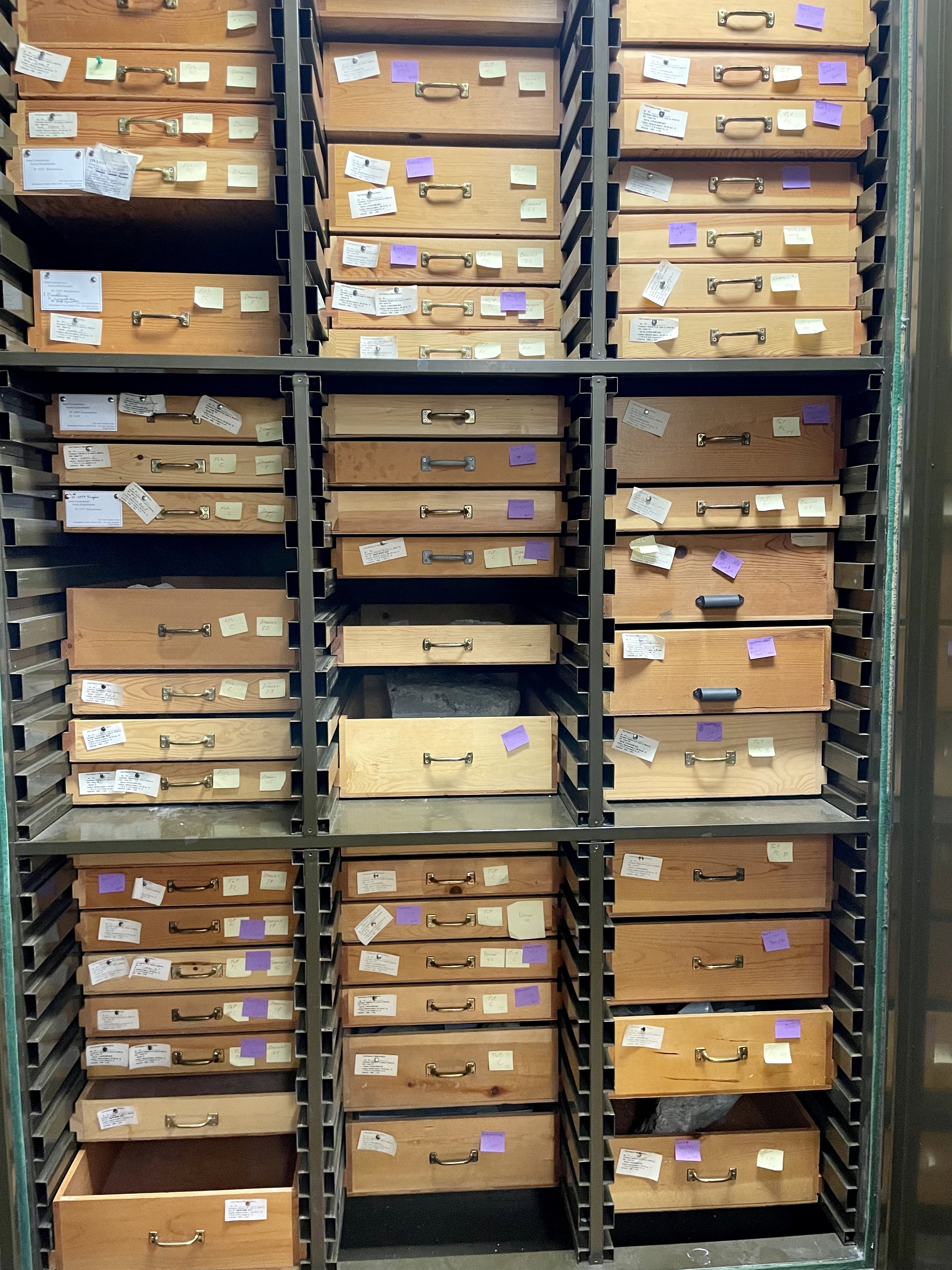
A formidable predator that lived 340 million years ago has been dubbed “the T Rex of its day.”
Named Whatcheeria, it had huge razor sharp teeth and bone crushing jaws that snapped animals in half.
The tetrapod was one of the first creatures to hunt on land and topped the food chain of the time, say scientists.
It had a salamander like body and long narrow head, reaching more than six feet from nose to tail.
Co-author Ben Otoo, a PhD student at the University of Chicago, said: “If you saw Whatcheeria in life, it would probably look like a big crocodile-shaped salamander, with a narrow head and lots of teeth.
“If it really curled up, probably to an uncomfortable extent, it could fit in your bathtub, but neither you nor it would want it to be there.”
It grew unusually big for its time by front loading its growth in its youth. The US team analysed 350 specimens housed in the city’s Field Museum.
They range from single bones to complete skeletons and were discovered in a limestone quarry near the town of What Cheer, Iowa.
Modern reptiles and amphibians that descend from the beast develop slowly and steadily.
Bony grooves in its skull for sensory organs reveal it spent most of its time underwater. Sturdy leg bones could have helped it hunker down in one spot and wait for prey to swim by.

Mr Otoo said: “It probably would have spent a lot of time near the bottoms of rivers and lakes, lunging out and eating whatever it liked. You definitely could call this thing ‘the T. rex of its time.’”
Whatcheeria is part of the lineage that eventually evolved into the four-limbed animals alive today - including humans.
Co author Dr Ken Angielczyk, a curator at the Field Museum, said: “Whatcheeria is more closely related to living tetrapods like amphibians and reptiles and mammals than it is to anything else, but it falls outside of those modern groups.
“That means that it can help us learn about how tetrapods, including us, evolved.”
Tetrapods include amphibians, reptiles, mammals and birds. They evolved from the lobe-finned fishes in the middle Devonian Period, which began 419 million year ago.
Dr Angielczyk said: “Most early tetrapods are known from just one skeleton, if you’re lucky - in a lot of cases just a fragment of a single bone.”
With so many individuals at the Field, the researchers have been able to spot variation within the species.
Some Whatcheeria are six and a half feet long, while others are much smaller. That means there was an opportunity to study how they grew.

Lead author Professor Megan Whitney, of Loyola University, Chicago, said: “Examining these fossils is like reading a storybook, and we are trying to read as many chapters as possible by looking at how juveniles grow building up to adulthood.
“Because of where Whatcheeria sits in the early tetrapod family tree, we wanted to target this animal and look at its storybook at different stages of life.”
The researchers analysed thigh bones from nine individuals ranging from juvenile to adult under a microscope. When an animal is growing, it creates new layers.
Mr Otoo said: You might see a seasonal pattern where the animal is growing a lot during the spring and summer and then stopping in winter and resuming the next spring.
“By examining how thick the growth rings are over the course of an animal’s life, you can figure out if the animal’s growing continuously throughout its lifetime, perhaps with some temporary interruptions, or basically growing to an adult size, then stopping.”
In modern tetrapods, some animals grow a lot as juveniles and then stop when they reach adulthood. Birds and mammals, including us, are like that.
But other animals like crocodiles and many amphibians keep growing bit by bit their whole lives.
The study found Whatcheeria grew rapidly when it was young, and then leveled off over time.
Prof Whitney even found evidence of fibrolamellar bone, which is primary bone tissue associated with fast growth. The discovery helps illuminate Whatcheeria’s lifestyle.
Co author Dr Stephanie Pierce, of Harvard University, Boston, said: “If you are going to be a top predator, a very large animal, it can be a competitive advantage to get big quickly as it makes it easier to hunt other animals, and harder for other predators to hunt you.
“It can also be a beneficial survival strategy when living in unpredictable environments, such as the lake system Whatcheeria inhabited, which went through seasonal dying periods.”
But growing really big really fast takes an enormous amount of energy, which can be a problem if there is not enough food and resources.
It is easier to get just enough food to get a little bit bigger, the same way it’s easier to make smaller monthly rental payments than it is to save up for a big downpayment on a house.
As well as shedding fresh light on the early tetrapods, the findings are a reminder that evolution isn’t a neat stepwise process, but a series of experiments.
Added Dr Angielczyk: “Evolution is about trying out different lifestyles and combinations of features.
“And so you get an animal like Whatcheeria that Is an early tetrapod, but it Is also a pretty fast-growing one. It’s a really big one for its time.
“It has this weird skeleton that’s potentially letting it do some things that some of its contemporaries weren’t. It’s an experiment in how to be a big predator, and it shows how diverse life on Earth was and still is.”







